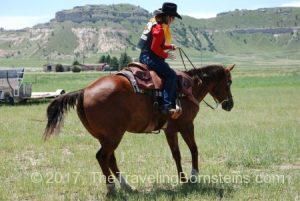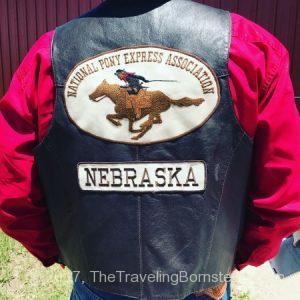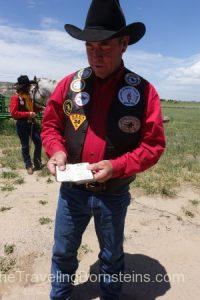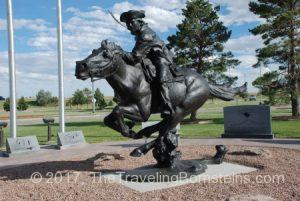
Wild West TV shows and movies include iconic symbols such as stagecoaches, gunfights, saloon brawls, wagon trains, and Pony Express riders. After absorbing these images for decades, it’s easy to see how Hollywood can lead one astray. For example, these westerns make it appear that the Pony Express riders delivered mail for many years. It just adds to the “legend of the pony.”

Erase that thought from your mind and focus on a few key facts. The Central Overland California & Pike’s Peak Express Company, better known as the Pony Express, employed men to ride horses between St. Joseph, Missouri and Sacramento, California, using a relay mail system. The trail was a little less than 2,000 miles long.
Letters sent from New York to California took about a month by ship and three weeks to several months by stagecoach. On average, the Pony Express journey took only 10 days. It took less than eight days to deliver Abraham Lincoln’s inaugural address to Californians.
These young and lightweight horsemen would ride between designated stations that were generally 75 to 100 miles apart. There were also shorter relay stations, every 10-15 miles where riders could switch to a fresh horse. The first Pony Express ride occurred in April 1860. Businesses paid a premium for this service. According to history.com, people were charged $5 for every half ounce of mail. The Pony Express became obsolete when Western Union completed the transcontinental telegraph system. Contrary to most people’s impressions, the Pony Express only lasted 19 months. The last ride was in November 1861. Bankruptcy tarnished the owners’ reputation and legends about the Pony Express were soon to follow.
Another myth worth dispelling is Buffalo Bill Cody’s role in the Pony Express. While he actively used his Wild West Show to promote the Pony Express, historians have been unable to find any evidence that he actually participated in it.

While traveling through western Nebraska, I met with two modern day Pony Express riders, Casey and Max. They told our group about the National Pony Express Association. It was formed in 1978 to maintain this piece of western history. Riders from this association had the honor of carrying the Olympic torch in 1996. The group’s major event is the annual Re-ride each summer. Since 1978, these riders reenact the journey in a 10-day, round-the-clock, nonstop event that follows the original trail as best as possible. Inside their mailbag, they carry a GPS tracker. The participants also use shortwave radios and cell phones to track their progress. Back in the 19th century, the mailbag was called a mochila (Spanish for knapsack). The mochlia was transferred from one rider to the next.
While visiting the Legacy of the Plains in Gering, Nebraska our small group was treated to a Pony Express Demonstration. A father and daughter team (Max and Casey) talked about the history of the Pony Express and also showed us how the mochlia was passed from rider to rider. Max proudly recited the original Pony Express loyalty oath, which all members of the association must still recite.

Both the National Park Service website and the National Pony Express Association website provide information about car tours and places to visit along the Pony Express National Historic Trail in Missouri, Kansas, Nebraska, Utah, Nevada and California. Keep in mind that segments of the historic trail are now owned by public and private entities. For that reason, it’s no longer possible to walk or drive the entire length of the original trail. However, there are numerous historic sites and monuments along the way. On the drive back to Colorado, we stopped in Sidney to observe a monument dedicated to the Pony Express.
Travel can oftentimes reveal truths that are buried beneath myths. A visit to places along the Oregon Trail and Pony Express Trail will create a new appreciation and understanding of western U.S. history. In western Nebraska consider visiting Scotts Bluff National Monument in Scottsbluff, Legacy of the Plains Museum in Gering, Chimney Rock and Museum in Bayard, the Windlass Hill Trail at the Ash Hollow State Historical Park in Lewellen, and Boot Hill in Ogallala.
Can You Share?
If you visit a segment of the Oregon Trail or Pony Express Trail, please share your experience below.
BIO
Sandra Bornstein is a freelance travel and lifestyle writer. She shares her experiences and recommendations on this blog and on other websites. Sandra contributes a monthly travel tip column for Golden Living, a Best Version Media magazine.
Sandra is the author of MAY THIS BE THE BEST YEAR OF YOUR LIFE. This memoir highlights Sandra’s living and teaching adventure in Bangalore, India. As a licensed Colorado teacher, Sandra has taught K-12 students in the United States and abroad. She also taught college level courses.
Sandra’s memoir was a finalist in the Travel category for the 2013 Next Generation Indie Book Awards, the 2013 International Book Awards, the 2013 National Indie Book Excellence Awards, 2013 USA Best Book Awards, and a Honorable Mention award in the Multicultural Non-Fiction category for the 2013 Global ebook Awards.
Leave a Reply
You must be logged in to post a comment.